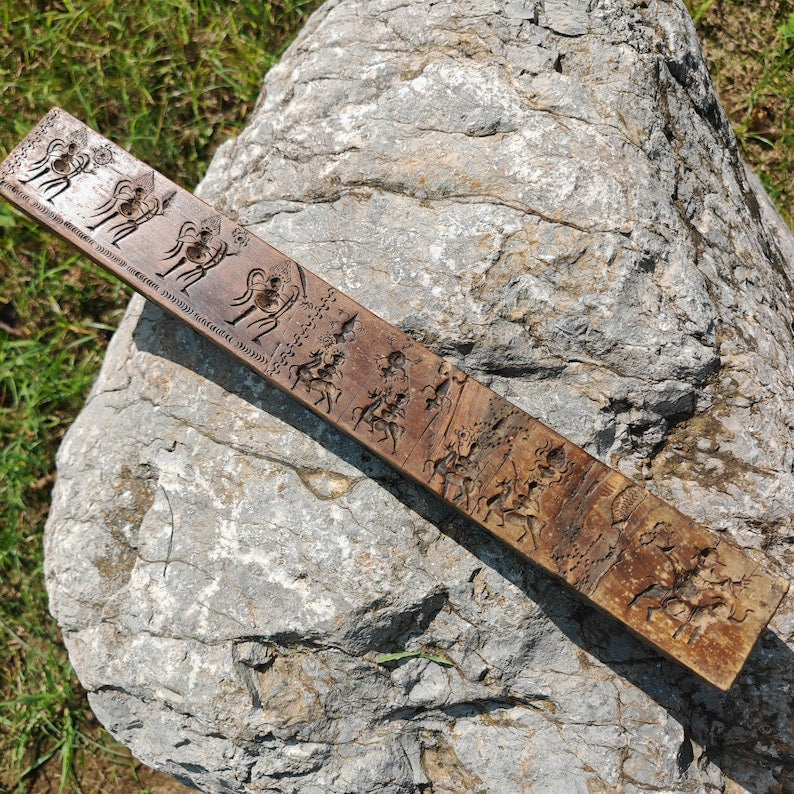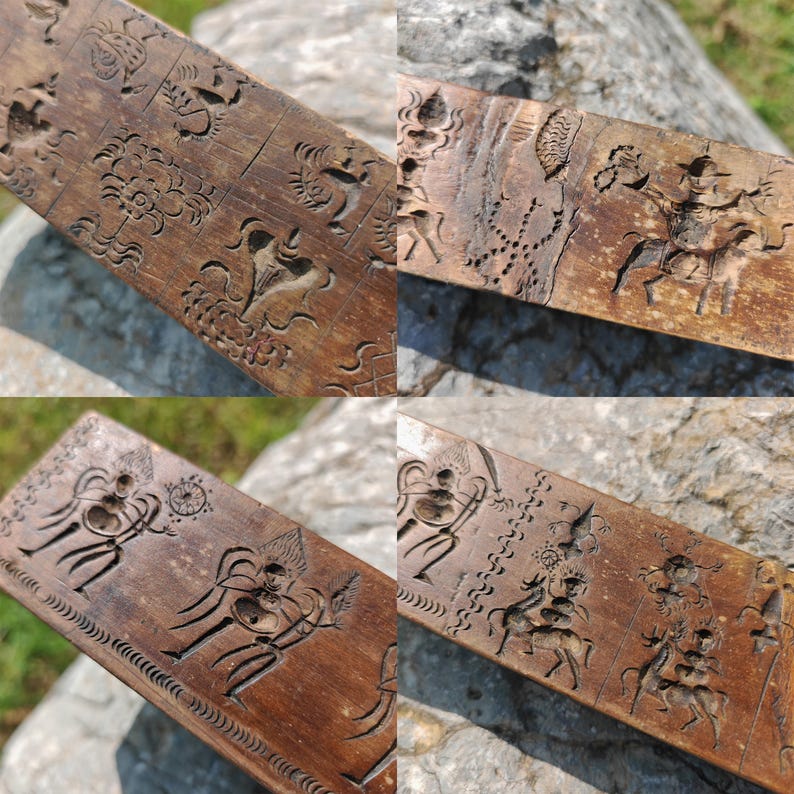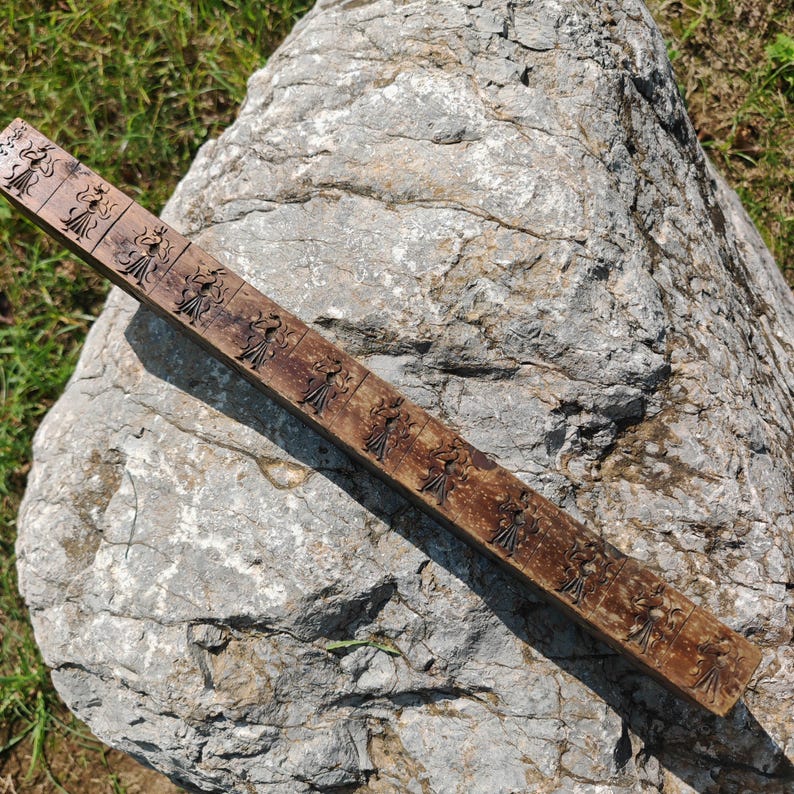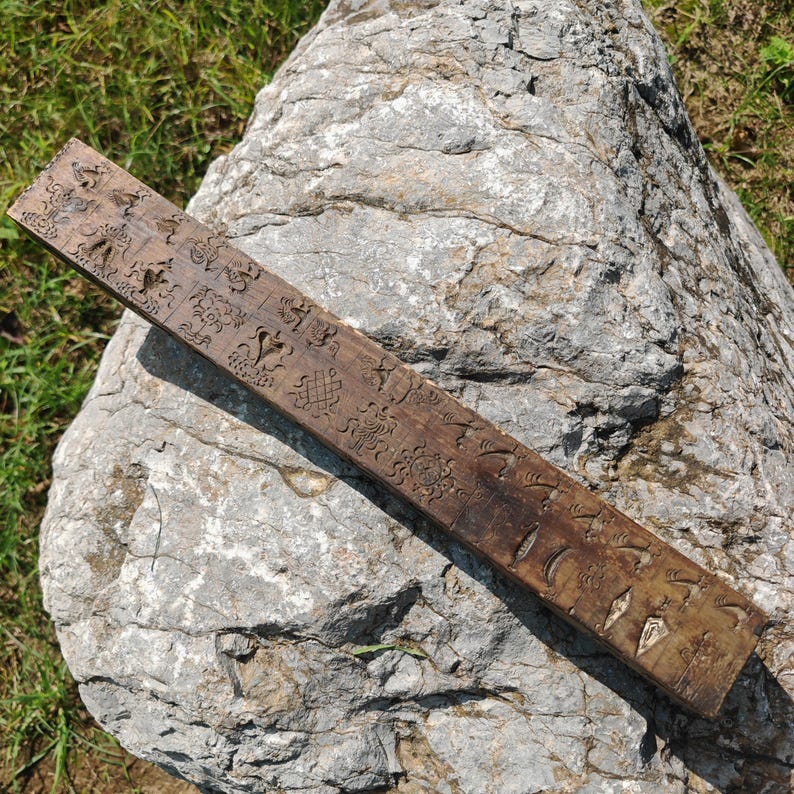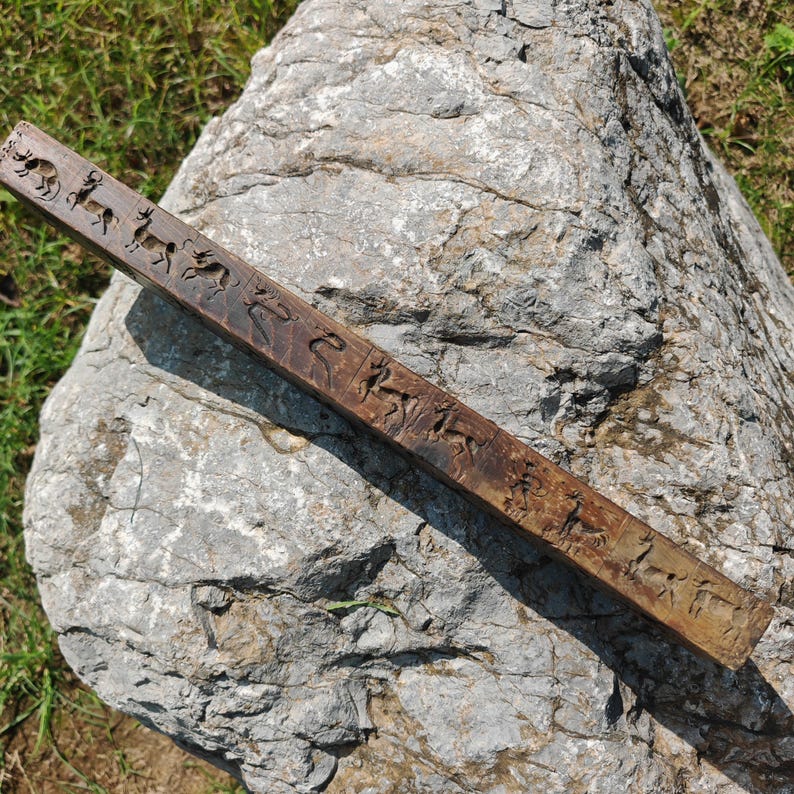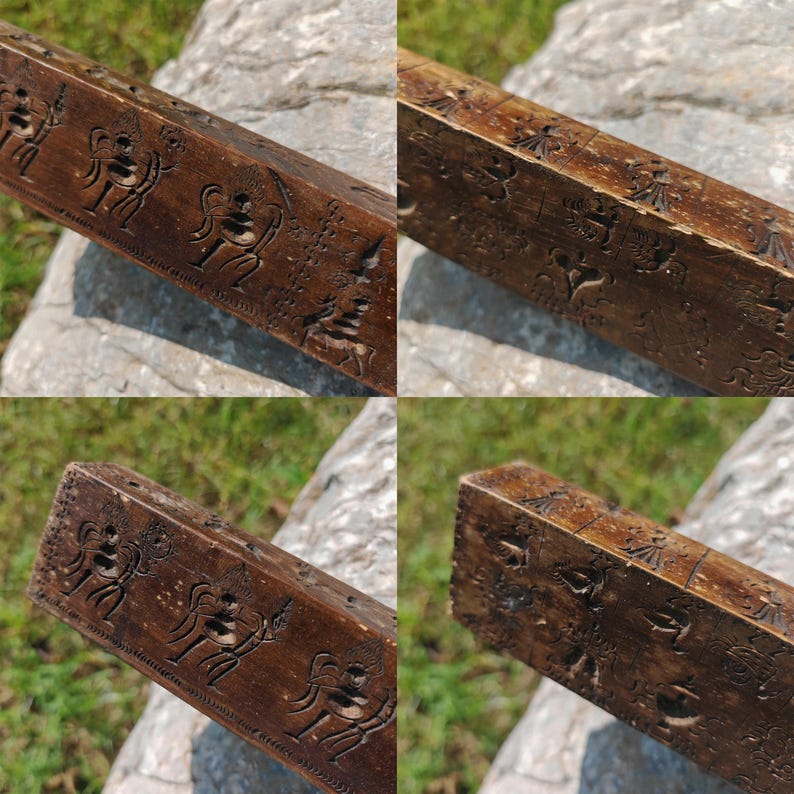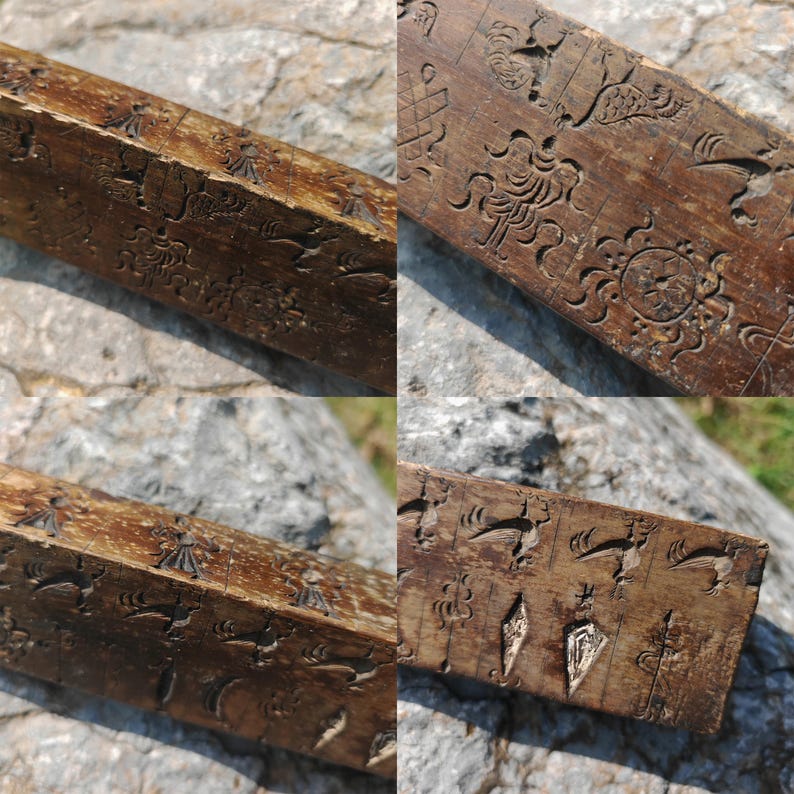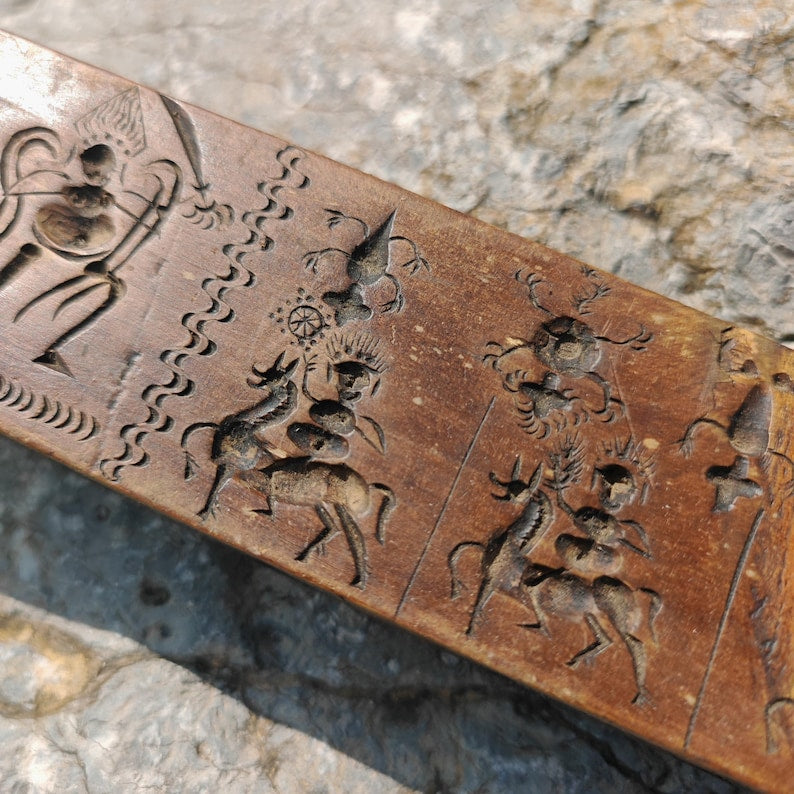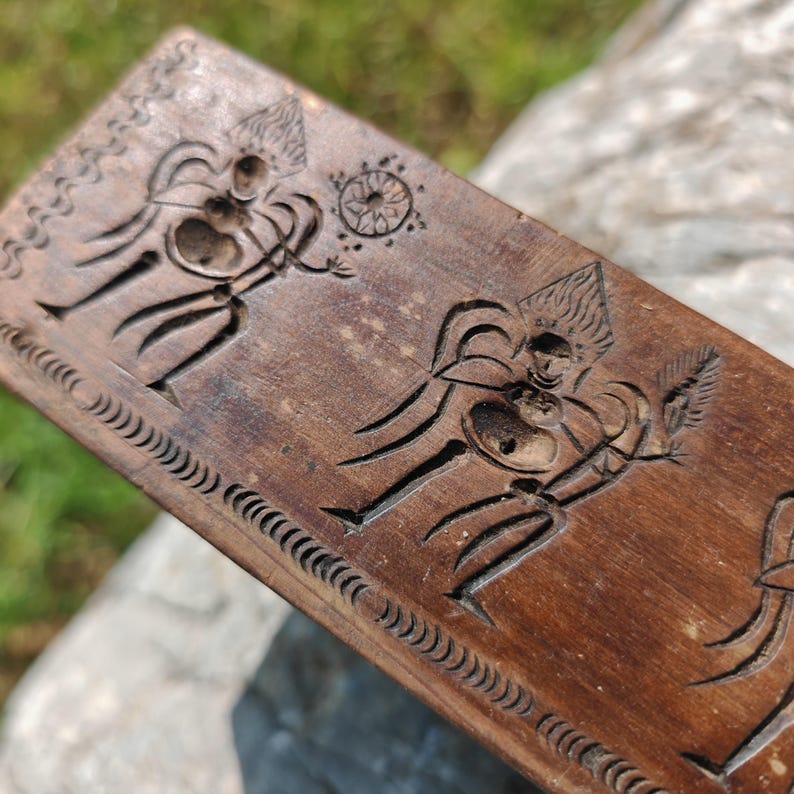Zanpar Wooden Mold Stick
Zanpar Wooden Mold Stick
⏱Vintage:
☞Handmade:
⚒Materials:
☲Size:
Couldn't load pickup availability
ONLY ONE,UNIQUE ONE.
Discover the exquisite beauty of our Gandhanra Antique Tibetan Buddhist Zanpar Wooden Mold Stick, a remarkable piece that embodies the rich heritage of Tibetan craftsmanship.
This fascinating Dharma Ritual Stick,is approximately 70 years old, collected from the illustrious Yar Chen Gar monastery—renowned for its cultural significance and artistic excellence—.
This meticulously handcrafted zanpar is a cuboid column with 4 sides, carved over 65 intricate patterns carved using traditional Tibetan engraving techniques.
These esoteric ritual objects not only serve as stunning decor but also act as protectors within your sacred space.
Elevate your spiritual practice or add a touch of authentic artistry to your home with this unique wooden mold stick, a true testament to the timeless traditions of Tibetan Buddhism.
Details
Material:wood
Craft: Hand-carved
Size:
Length about 50cm / 20 inches
Height about 6.5cm / 2.64 inches
Width about 4cm / 1.6 inches
Weight about 0.5kg
ABOUT ZANPAR
གཏོ་པར། zanpar is a divination ritual used by lamas when chanting sutras and mantras,it is also an exquisite wood carving handicraft, an exquisite decoration.
The spelling of these very special Tibetan objects varies greatly. Apart from the most common form "Zanpar" you will find other like "Zangpar", "Zenpar" or "zan-spar" and many more.
Origin
Very often the pre-Buddhist Bon religion is named as the origin of the Zanpars.
The basic idea of the Zanpar practice, i.e. to copy pictures on form by imprinting is surely true for most cultures & periods.
Robert BRUNDAGE describes these objects in the following way: “Carvings of myriad ritual implements, animals, deities and demons are skillfully rendered in miniature. … Intricately carved images of esoteric ritual objects, demonic spirits and Buddhist protectors were carved into wooden sticks called Zanpar (zan-spar). Tsampa (barley meal and yak butter dough) was pressed into the appropriate images to produce ritual sacrificial offerings (T. glud) for good fortune and protection from malevolent spirits that often create disorder.”
Intricately carved images of esoteric ritual objects, demonic spirits and Buddhist protectors
Paul MORSE on wooden mould sticks: “Dough molds were used in Tibetan popular rituals to make dough effigies … The ritual is a form of protection, exorcism, or ransom. The molds would be carried from a monastery by a trained monk to the home of anyone who wished to cure sickness or to deal with various misfortunes. The practitioner could chose from the dozens of small inscriptions on the board to identify the type of obstacle to be dealt with, be it human, animal, bird, supernatural, or symbolic. This accounts for the great number of carved images found on a single board. He then places a ball of dough (tsampa flour and water) onto the appropriate incised images, presses it to form an images of the objects and then places them on an offering plate located on a specially constructed altar. Chants by the practitioner expedite the transfer whatever impediments he discovered into the dough effigies.”
NOTICE
1.This woodblock plate is only 1 left
2.Please allow 1-2cm error due to manual measurement.
3.The color may have different as the difference display.
Please make sure you do not mind before you bid.
